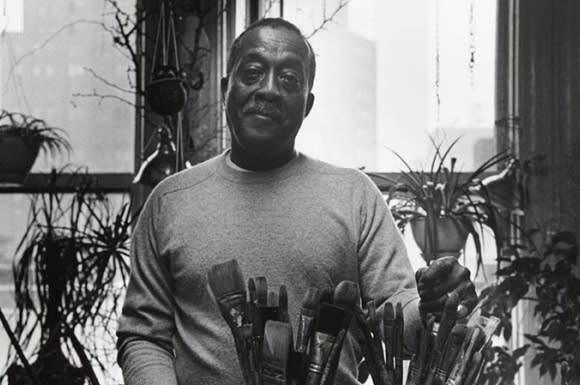Norman Lewis was born in Harlem, New York in 1909 and attended the Teacher’s College at Columbia University. While in school, he joined the 306 Group, a community institution co-founded by Charles Alston which was committed to fostering the exchange of ideas between social activists and artists. Alongside his contemporaries, Lewis became a founding member of the Harlem Artists’ Guild in 1935. His early work in the 1930s was mostly figurative, using a social realist vocabulary to depict his surroundings and draw attention to injustices such as poverty and police brutality. However, his work shifted throughout the 1940s towards the Abstract Expressionist style, while remaining committed to addressing issues of racism, poverty, and inequality. In 1950, Lewis was the only Black artist to attend the now-legendary Artists’ Sessions at Studio 35, moderated by Richard Lippold, Robert Motherwell, and Alfred Barr. These sessions, attended by two dozen of the artists who came to be known as Abstract Expressionists, are largely regarded to have defined many facets of the Abstract Expressionist movement, and cemented its attendees, including Lewis, into the art-historical canon of the American avant garde. In 1963, alongside Romare Bearden, Charles Alston, and Hale Woodruff, Lewis co-founded the group Spiral, which promoted the work of Black artists and emphasized making work that responded to the Civil Rights Movement. As the only Black artist among the first generation of recognized Abstract Expressionists, Lewis’ work did not receive the recognition it deserved during his lifetime, though in past decades his work has been the subject of renewed interest. Lewis’ works reside in the permanent collections of institutions such as the Art Institute of Chicago, the Museum of Modern Art in New York, and the National Gallery of Art in Washington, D.C., among numerous others.

